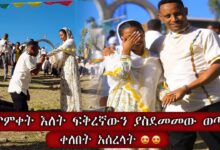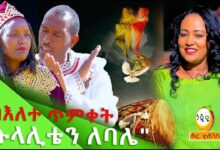Let us introduce you to the wonderful church
The Ge’ez language is utilized to honor the Ethiopian Church’s heavenly administrations. Since the appearance of the Nine Holy people (Pantelewon, Gerima (Isaac, or Yeshaq), Aftse, Guba, Alef, Yem’ata, Liqanos, and Sehma), who got away from oppression by the Byzantine Sovereign after the Board of Chalcedon, it has been the formal language of the congregation.
The Greek Septuagint was the Hebrew Scriptures version that was initially converted into Ge’ez, yet later amendments demonstrate that Hebrew, Syriac, and Arabic sources were utilized. In the nineteenth 100 years, a man known as Abu Rumi was quick to make an interpretation of it into present day vernacular. During his rule, Haile Selassie financed two Amharic interpretations of the Ge’ez Sacred texts, one preceding The Second Great War and the other later. Today, most messages are conveyed in the neighborhood language.
Ethiopia has numerous solid (rock-slashed) holy places, the most conspicuous of which are the eleven chapels at Lalibela. Beside these, there are two significant styles of engineering: basilican and nearby. However the early basilicas are essentially all in ruins, the Congregation of Our Woman Mary of Zion in Axum is an illustration of the basilican style.
These models mirror the impact of the draftsmen who planned the basilicas in San and somewhere else in the Bedouin Promontory in the sixth 100 years. Local houses of worship are partitioned into two sorts: elliptical chapels, which are generally found in Tigray, and roundabout temples, which are customarily tracked down in Amhara and Shewa (however either style might be found somewhere else).
The asylum is square and clear in the center in the two ways, and the plans depend on Jewish custom. Frescoes should be visible on the walls and roofs. The body of the congregation is encircled by a round or rectangular patio.
Current Ethiopian houses of worship might utilize basilican or local design styles, as well as present day development methods and materials. The congregation and external court in rustic regions are frequently covered, with mud-constructed walls. The congregation structures are typically encircled by a forested region, which goes about as a biodiversity repository in region of the world that are generally deforested.











